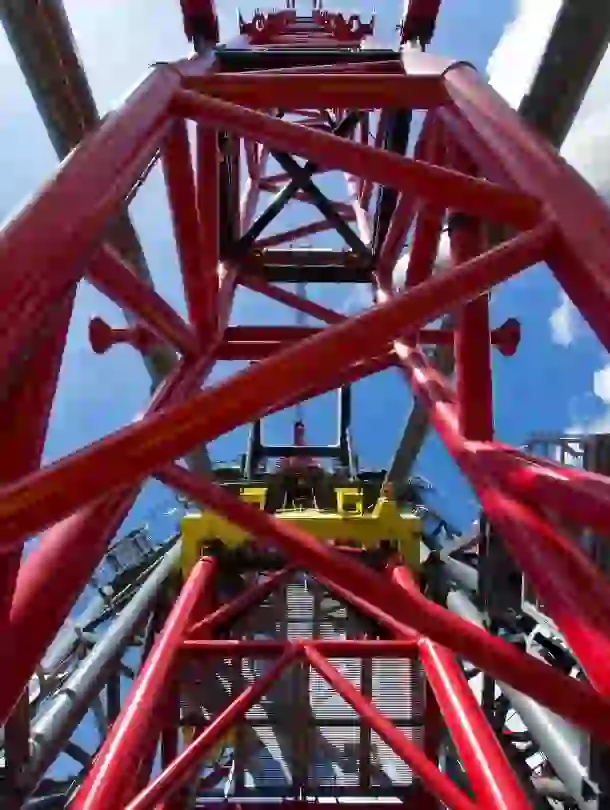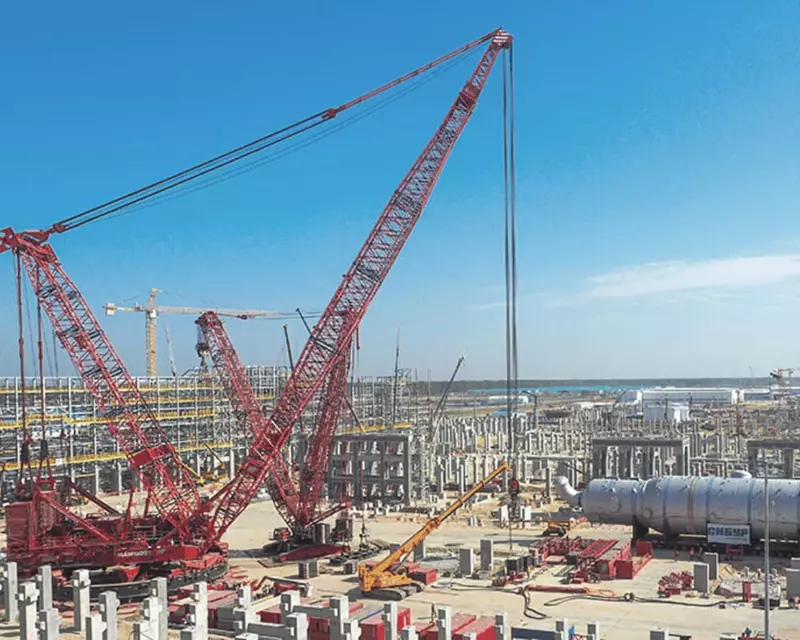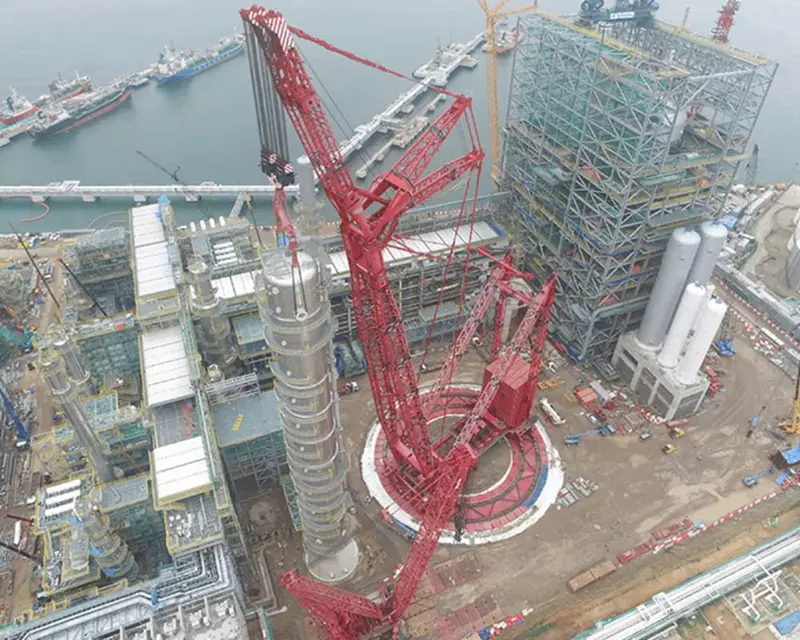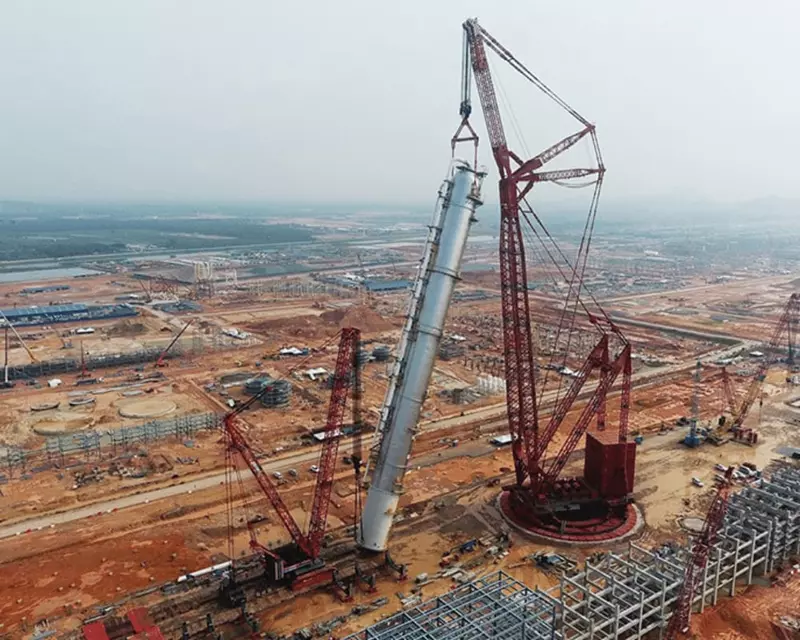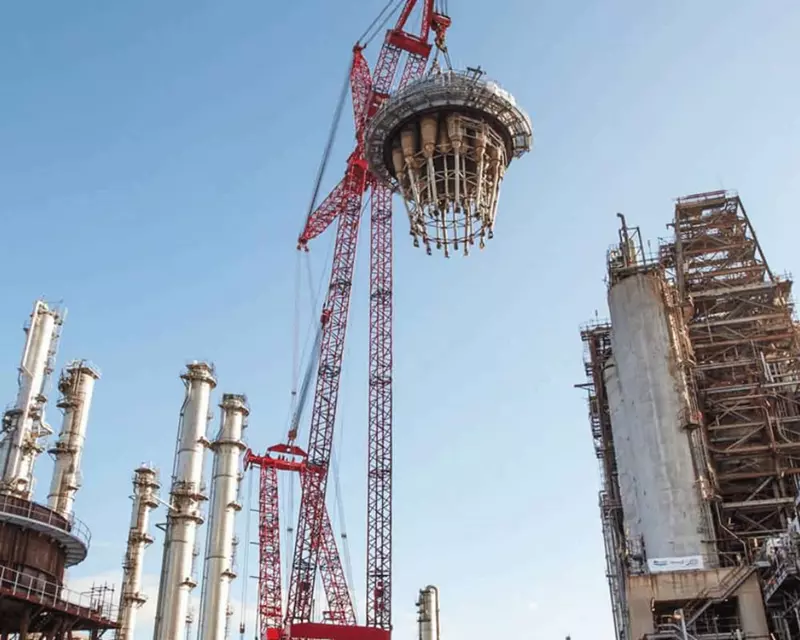
Sector:
Oil and Gas
Expertise:
Heavy lifting
Crane lifting
Heavy transport
Benefits:
Protected infrastructure
Optimized schedule
Location:
United Kingdom
Turning a congested obstacle course into a workable site.
As part of a refurbishment operation, the cyclones and regenerator head at the Essar Stanlow Refinery needed to be replaced.
Situated at the heart of the plant, the cyclones had to be maneuvered through tight spaces against strict deadlines. Mammoet was contracted to engineer and carry out the transports and lifts. To save time, the regenerator heads containing the cyclones were swapped by a PTC crane through the roof of the generator shell, instead of through the side. After four years of preparation, Mammoet executed the job in just 30 days.
The biggest operational challenge was space. The confined quarters of the plant called for special solutions for transporting the regenerator head through the refinery, as well as for storing and lifting it. But two months prior to the operation, Mammoet was faced with a different problem.
An unexpected reassessment of the transport’s specifications by the local Area Engineering Agency forced Mammoet to rethink the entire transport plan, because of new load distribution requirements. At this time, turnaround preparations had already begun.
The original plan was to carry the regenerator head on a train of double-wide SPMTs from Ellesmere Port to the refinery at Stanlow. Faced with the new load distribution requirements, Mammoet recalculated that increasing the trailer length would do the trick. A seemingly simple solution, but one that averted major complications. With the transport secured, Mammoet moved on to the next phase.
3D models of the crane and plant were used to ensure all lifts would steer well clear of the facility’s infrastructure. A pipe rack separating the crane from the storage site made it impossible to transport the head-on SPMTs to the PTC. Therefore, a skid system comprising of two 38-meter gantry beams was built to slide the regenerator head over the rack from the storage site to the crane.
The turnaround sequence began right on schedule. After the top of the regenerator, the shell had been lifted, the old regenerator head was removed. The new head, including cyclones and dip-legs, was skidded towards the crane and then successfully lifted into the shell.
Removing the cyclones through a hole in the side of the regenerator shell would have taken 60 days. Thanks to Mammoet’s approach, the job was done in just 30 days, effectively cutting turnaround time in half.
